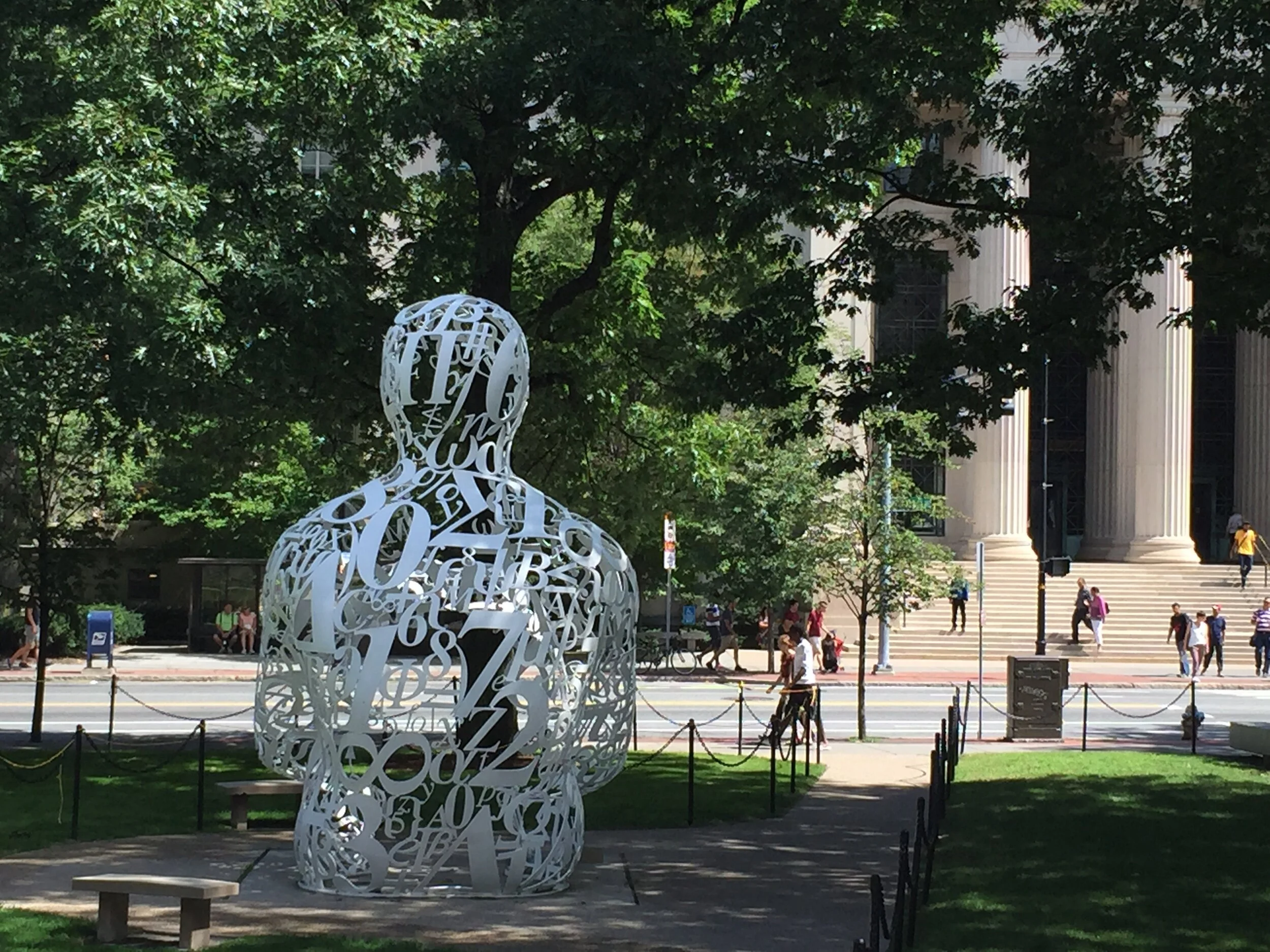“… rebirth to a higher level of consciousness is not accomplished by flying through the air. The ascent is balanced by the descent. The treasure is recovered through encountering the chthonic devourer, the dark side of the Great Mother.” - Marion Woodman and Elinor Dickson
Finding the Feminine Through Place
Presentation for the Association for the Study of Women and Mythology (ASWM) conference, Seeking Harbor in our Histories: Lights in the Darkness.
Depth psychology understands that human beings are deeply interconnected with the world around them. When we view the world symbolically—through metaphorical eyes—we begin to see images and experiences not as random or superficial, but as meaningful expressions of deeper psychic truths. Images encountered in the world, especially within institutions and organizations, often reflect the archetypal forces shaping their culture.
Archetypes are universal patterns or energies that exist across cultures and eras—expressing themselves in symbolic forms such as the mother, father, child, and hero, as well as in mythic experiences like death and rebirth or the hero’s journey. These archetypes don’t just reside in individual psyches; they also emerge collectively, woven into the fabric of cultural institutions.
During an extended visit to the Massachusetts Institute of Technology (MIT), I became intrigued by the symbolic imagery embedded in its environment. One sculpture in particular stood out: The Alchemist by Jaume Plensa. In depth psychology, alchemy is a powerful metaphor for psychological transformation—the process of turning psychological "lead" (unconscious material) into "gold" (conscious awareness). Plensa described the sculpture as embodying MIT’s mission: “part magician, part scientist, and part philosopher.” This triadic image brings together three realms often kept separate—rational knowledge, intuitive wisdom, and existential inquiry—suggesting a more integrative approach to understanding and innovation.
Elsewhere on campus, the iconic Great Dome evokes potent archetypal energies, particularly aspects of the Great Mother and the Feminine Trickster—both often repressed in Western culture.
C.G. Jung noted that the Great Mother embodies the "wisdom and spiritual exaltation that transcend reason; any helpful instinct or impulse; all that is benign, all that cherishes and sustains, that fosters growth and fertility. The place of magic transformation and rebirth." However, she also embodies "anything secret, hidden, dark; the abyss, the world of the dead, anything that devours, seduces, and poisons that is terrifying and inescapable like fate." The Western worldview holds that a mother should be kind and loving. However, Jung notes that in other cultures, most notably in India's Goddess Kali, the Great Mother archetype is both of the light and the dark and loving and terrible.
Although the archetypal dark mother may be unsettling, she plays a vital role in psychological development. She forces us to confront shadow material, guiding transformation through trials, disintegration, and eventual rebirth. This theme is mirrored in a student-created artwork housed within the Great Dome. Formed from coils of old problem sets and silver balls tracing roller-coaster-like tracks, the piece uses words like passion, growth, slog, and teamwork to symbolize the intense pressure and transformation experienced by students at MIT. The metaphorical journey reflects the archetypal process of death and rebirth under the shadow of a demanding maternal figure.
The Great Dome also channels trickster energy, especially in the student-led "hacks"—elaborate, humorous stunts pulled off under cover of night. One of the most legendary involved a replica police car appearing atop the dome. This playful subversion, often attributed to the Feminine Trickster, uses humor and wit to challenge hierarchical norms and relieve collective tension. In this sense, the trickster becomes a necessary counterforce to institutional rigidity, restoring a sense of play, imagination, and creative disruption.
Through even brief engagements with the symbolic life of institutions, we can begin to uncover the archetypes that animate their cultures. These living images—whether sculptures, stunts, or architectural icons—offer insight into the psychological forces at work beneath the surface.
